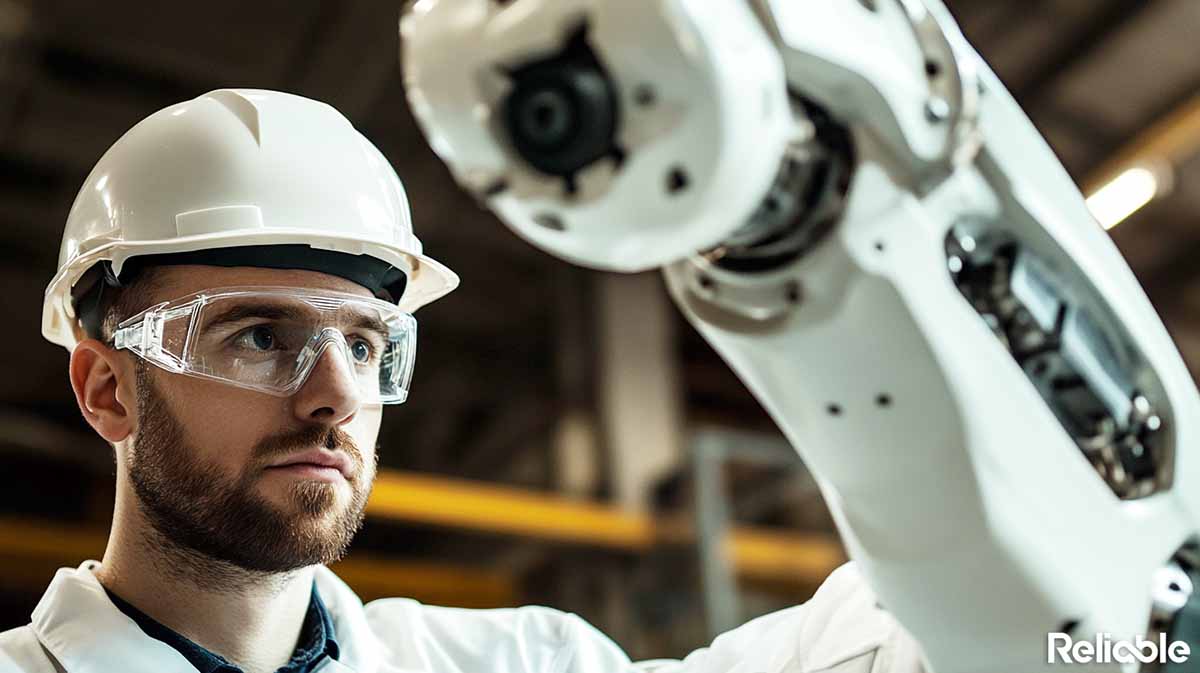Human-Robot Interaction (HRI) efficiency refers to how effectively and smoothly humans and robots can work together to achieve shared goals. To grasp the concept deeply, we must break it down into its components and explore what makes HRI efficient. Think of it like a dance between two partners, where both need to be in sync to avoid stepping on each other’s toes.
Communication
- Analogy: Imagine two people who speak different languages trying to work together on a project. If they don’t understand each other, it’s going to be chaotic. For robots and humans, communication can happen through various channels—like spoken language, gestures, or even visual signals (like a robot’s lights indicating it’s charging). The more intuitive and clear this communication, the more efficient the interaction.
- Technical Detail: Robots use sensors, cameras, and natural language processing to understand human commands, gestures, and even emotions. Efficiency depends on how accurately the robot interprets these inputs and how well it responds.
Task Allocation
- Analogy: Consider a kitchen where a chef and a sous chef work together. The chef focuses on complex tasks like seasoning, while the sous chef handles the chopping. The interaction is efficient if both stick to what they do best without overlap or gaps. Similarly, in HRI, efficiency improves when tasks are allocated based on the strengths of humans (creativity, decision-making) and robots (precision, endurance).
- Technical Detail: This involves algorithms that dynamically allocate tasks based on the current situation, learning from past interactions, and adapting to new circumstances.
Adaptability and Learning
- Analogy: Think of a car with a GPS system that learns your driving habits and suggests routes you prefer. In HRI, adaptability means the robot learns from human preferences, habits, and mistakes to improve future interactions.
- Technical Detail: Machine learning algorithms play a significant role here. They enable robots to adapt by analyzing patterns in human behavior, predicting needs, and adjusting their actions accordingly.
Shared Understanding (Common Ground)
- Analogy: Imagine a game of chess where one player thinks the goal is to capture the opponent’s pieces, while the other thinks it’s about occupying the most space. Misaligned goals lead to confusion and inefficiency. In HRI, the human and the robot must have a shared understanding of the goals, tasks, and context.
- Technical Detail: Establishing common ground requires advanced artificial intelligence capable of context awareness, understanding objectives, and recognizing the state of the environment.
Physical and Cognitive Ergonomics
- Analogy: A computer mouse that fits your hand well makes work easier and faster, while an awkward design slows you down. In HRI, robots must be designed to physically and cognitively complement human abilities, reducing fatigue, errors, and frustration.
- Technical Detail: This involves ergonomic design principles, ensuring that robots’ interfaces, controls, and physical interactions are intuitive and require minimal cognitive effort.
Safety and Trust
- Analogy: If you’re working with someone you’re not sure will follow safety rules, you’ll be hesitant and work more slowly. Similarly, for efficient HRI, humans need to trust that robots will behave predictably and safely.
- Technical Detail: This is achieved through rigorous safety protocols, reliable performance, and clear communication from the robot, which helps build trust over time.
Measuring HRI Efficiency
- Analogy: Just like you might measure how quickly and effectively two teammates complete a task together, HRI efficiency can be measured by the time taken to complete tasks, the accuracy of the task completion, and the level of human satisfaction.
- Technical Detail: Metrics include task success rates, response times, error rates, and user feedback. Advanced systems also track physiological signals like heart rate or eye movement to assess human stress or cognitive load during interaction.
HRI efficiency hinges on good communication, innovative task distribution, adaptability, shared understanding, ergonomic design, and a foundation of safety and trust. When all these elements align, humans and robots can work together seamlessly, making interactions as natural as a well-coordinated dance.









